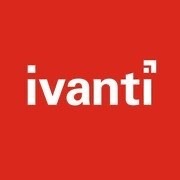Unified Endpoint Management (UEM) Software
Unified Endpoint Management (UEM) Software Overview
Best Unified Endpoint Management (UEM) Software include:
Hexnode UEM, Citrix Endpoint Management, ManageEngine Desktop Central, and Ivanti Unified Endpoint Manager.
Unified Endpoint Management (UEM) Software TrustMap
TrustMaps are two-dimensional charts that compare products based on trScore and research frequency by prospective buyers. Products must have 10 or more ratings to appear on this TrustMap.
Unified Endpoint Management (UEM) Products
(1-25 of 31) Sorted by Most Reviews

Atera offers a comprehensive solution for MSPs and IT Professionals. The platform provides in one integrated solution: full remote monitoring and management (RMM), PSA, remote access, patch management, billing, and reports. Atera’s pricing model also helps managed IT service providers…
Key Features
- Multiple Server Monitoring (49)88%8.8
- Automated alerts and notifications (50)84%8.4
- Remote monitoring (49)83%8.3

N-able RMM
SolarWinds Remote Monitoring & Management (RMM) is a cloud-based system monitoring offering for Managed Service Providers. It provides a full monitoring and management suite, including automation and threat detection capabilities, and can integrate with other SolarWinds products.

Hexnode UEM
Hexnode is a comprehensive Unified Endpoint Management solution from Mitsogo Inc. that aims to simplify the way people work with the help of intelligent tools. The management platform streamlines the entire device lifecycle model to offer its support at every stage, from device onboarding…

Quest now offers the KACE Systems Management Appliance (SMA) as an IT Asset tracking and management appliance (also available as a virtual deployment if hardware requirements are met). Beyond discovery, inventory tracking and license management, KACE emphasizes automating software…
Key Features
- Software and hardware inventory tracking (11)91%9.1
- Asset lifecycle monitoring (9)86%8.6
- License management (10)82%8.2
Learn More About Unified Endpoint Management (UEM) Software
What is Unified Endpoint Management Software?
Unified endpoint management (UEM) software helps businesses manage and control internet-enabled devices from a single interface.
Many businesses use a large number of internet-enabled devices, ranging from desktop computers to barcode scanners. Each of these endpoints must be discovered by the business network, maintained with software updates and security applications, and retired from the network at end-of-life. As a business adds endpoints to their network, the time required to manage them increases. The number of endpoints has proliferated massively with the growth of IoT applications and Bring Your Own Device (BYOD) policies.
UEM software aims to help businesses streamline the management of their endpoints. Vendors of UEM software offer a single application or platform from which all of a business’s devices can be secured and managed. Administrators can use UEM software to push updates, applications, and security policies to connected devices. Most UEM software also has the capability to remotely secure or wipe a lost or stolen device to protect sensitive information. This is most significant when securing personal devices used for business and for remotely managing IoT devices that are not usually managed or interacted with in-person.
Many UEM software products allow employees to add their own mobile devices to the platform, enabling secure Bring Your Own Device (BYOD) policies. This allows employees to securely access business applications and information without needing a company-issued device. The centralized device configuration and setup processes also speed up employee onboarding and allow IT departments to more directly configure devices for business application integration.
UEM Features & Capabilities
Most UEM software vendors include the following features:
Management of all business endpoints from a single platform
Remote manual or automatic pushing of updates and applications to multiple devices
Configuration and updates for on-device security policies
Configurable per-app VPN to secure business apps
Onboarding of employee-owned devices
Remote wiping of lost or stolen devices
Information collection to track device usage
Threat detection and mitigation
API framework for custom applications
UEM vs. MDM
Unified endpoint management and mobile device management (MDM) overlap in many goals and capabilities, but have different intended scopes. Mobile device management focuses exclusively on mobile devices, the largest use case being smartphones that run on iOS and Android. This technology became a necessity as smartphones became ubiquitous in the late 2000’s.
UEM is much more comprehensive than MDM in terms of devices it covers. Unified endpoint management software is designed to encompass all endpoints. This includes mobile devices, but also desktops, IoT devices, laptops, and specialized devices used in the field for certain industries. Unified endpoint management tends to cover far more devices and be much more customizable and configurable than traditional MDM platforms, although they both espouse many of the same objectives.
UEM Software Comparison
When comparing different unified endpoint management software, consider these factors:
- Security vs. Broader Device Management: Many UEM products have grown out of a cybersecurity background, leading to a common emphasis on securing endpoints. However, some products offer more robust capabilities for managing patches, updates, and configurations to improve productivity, performance, and other quality of life changes to endpoints. Consider whether the desired scope for a UEM product is primarily or purely security, or if broader management functions would also be beneficial, especially if many endpoints are company-owned.
- IoT Support: How well does each platform support IoT devices? The range of potential IoT devices is enormous, so buyers should look for use-case specific demos or examples from vendors to ensure that each product fits their specific IoT needs, if they have any.
- Integrations: How well does each UEM product integrate with the rest of the organization’s security tech stack? Consider any preexisting endpoint security, firewall, monitoring, or SIEM platforms that the organization uses.
Start a unified endpoint management software comparison here
Pricing Information
Pricing for UEM software varies based on the number of users or the number of devices to be managed. Most vendors use a tiered monthly subscription pricing model. Many vendors also offer free trials.


















